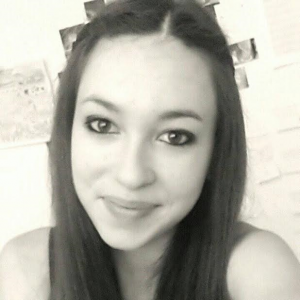Worth Living Ambassador Felicia Singh

Hello, my name is Felicia. I am a 25 year old healthcare professional and
counseling/psychology student with anxiety. As well as someone with an unexplainable
yearning to understand mental health disorders. The who, what, where, when, and whys of it all.
Caution: Felicia discusses Self-harm and Suicide
Cutting
So it’s a usual Sunday morning for me. I’m easing into the second half of my weekend morning
routine which is to sit down coffee in hand with a book, magazine, blog post, you get the jist.
I come across this article in WebMD called the perils of cutting. At first I wasn’t going to
read it. But then I thought this is definitely mental health related so I probably should. I’m
always interested in learning about different aspects of mental related illnesses.
The article was informative. It gave the following numbers of people that cut, scratch, burn, or
bring other bodily harm to themselves. With more than 13% of the adolescents in the U.S that
suffer from this problem and 6% of adults in the U.S that also suffer from this issue. Now I have
only known one individual that has dealt with and overcame this issue. It was a long road of
therapy, medication, expressive outlets, and a great support system.
Control is something we all want on some level or another. We want to be in control of
ourselves and our lives. Those that cut themselves will tell you that the act is not about
mutilating themselves but instead it’s about control. When you inflict physical pain on yourself it
takes your mind off of other things. It creates a mental distraction if you will. This may be a lot
for some of us to wrap our mind around. I personally had a hard time understanding this
concept as our issues don’t simply go away because we don’t think about them. I do understand
that not all of us think in practical terms especially when we are hurting and struggling to find
coping mechanisms and even more so when dealing with any mental health related illness the
word practical belongs no where near that discussion. However, this is definitely not a healthy or productive way to deal with emotions. Based on the numbers I realize that this is a more common issue among adolescents than adults. Which makes sense as teens are in the halfwaypoint between childhood and adulthood. They are still trying to find themselves and are building the necessary skills to be able to deal with the trials of the world.
I don’t have children so I can’t speak on the whole parenting topic in extent. But I will say that
during the adolescent years support and understanding is very crucial for the developing mind.
Therapy and support groups would be beneficial for both younger people and adults that deal
with this problem. Inflicting physical pain on oneself is never the answer. It doesn’t solve
anything and in fact it creates more of an issue. Studies show that people that cut themselves
are seven times more likely to attempt suicide than those that do not. Numbing the pain is not
healing.
We must learn to view our lives as something worth living. Working through our issues
brings peace to our lives. Things will never be perfect but I do believe we all have the ability to
live happy fulfilling lives.

